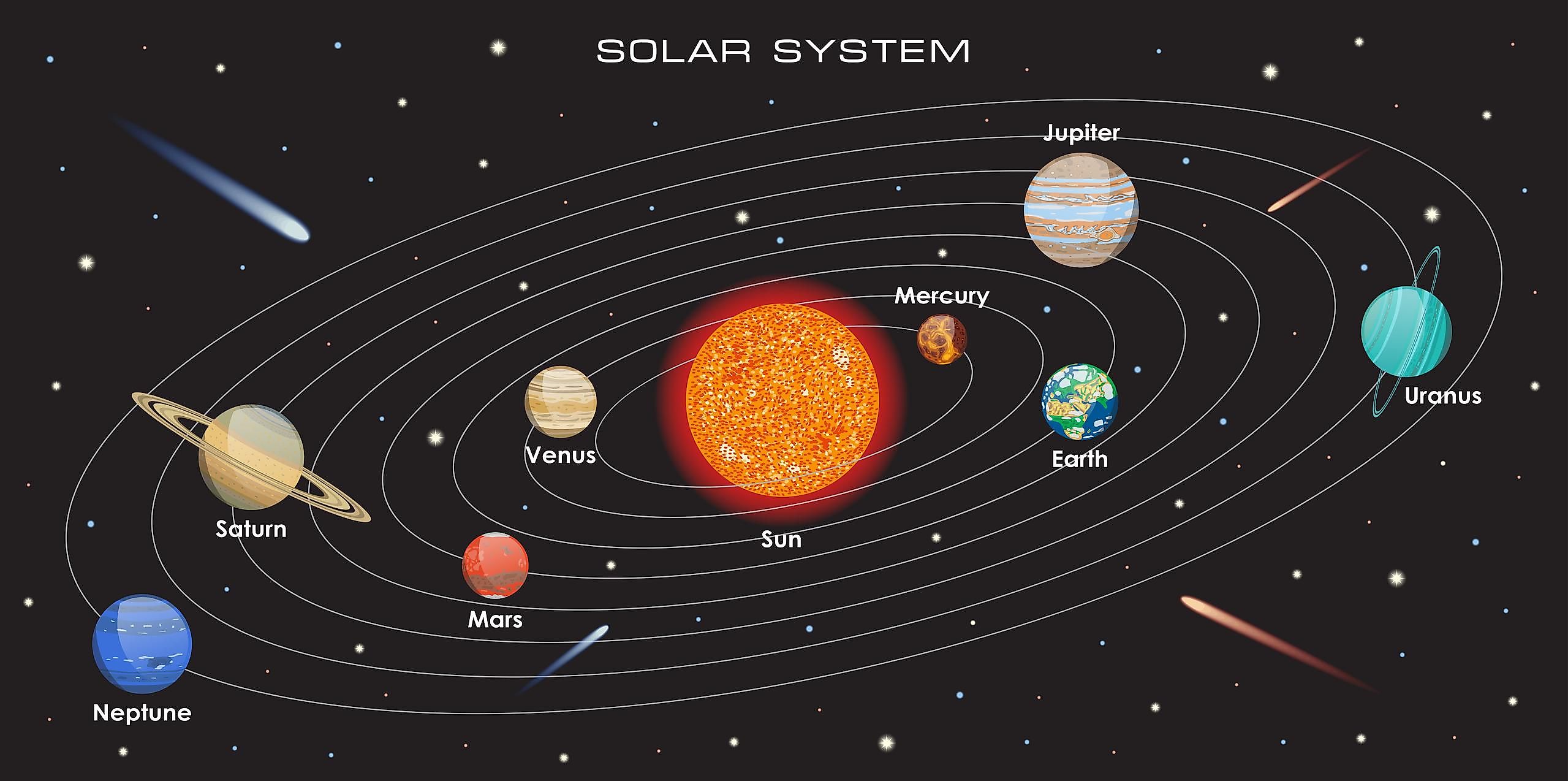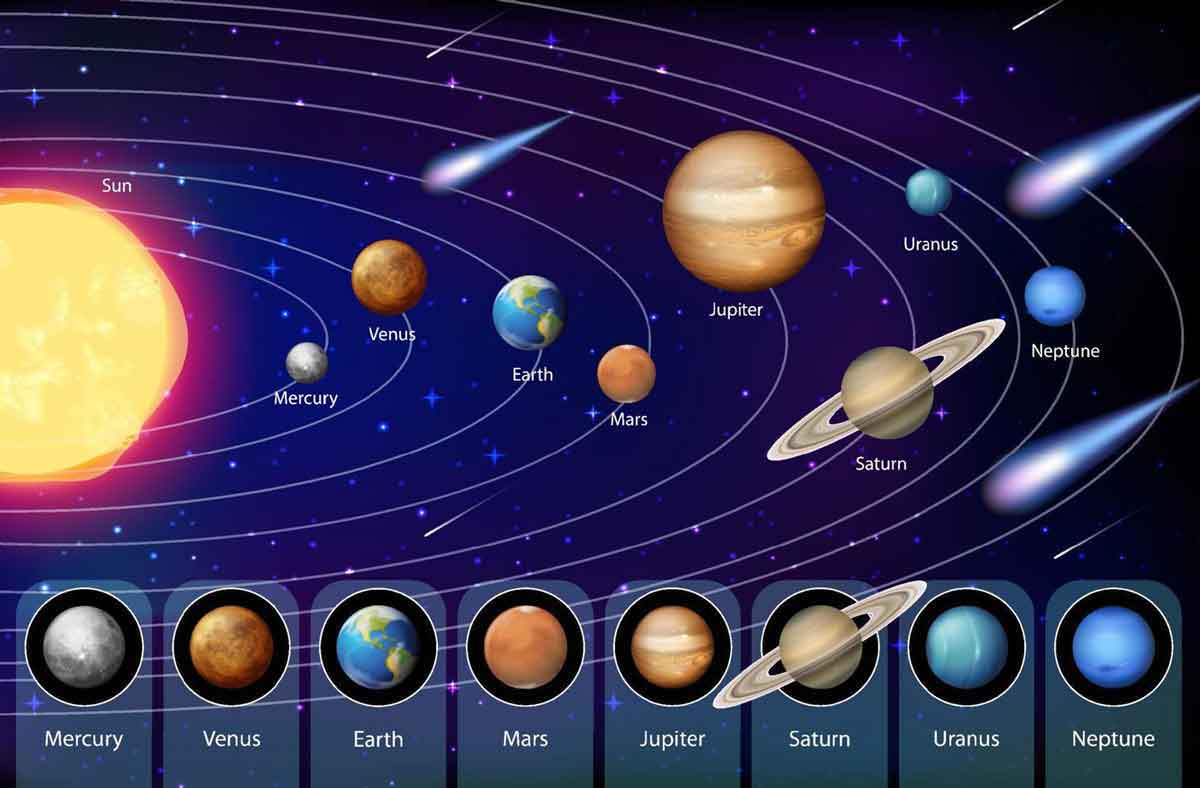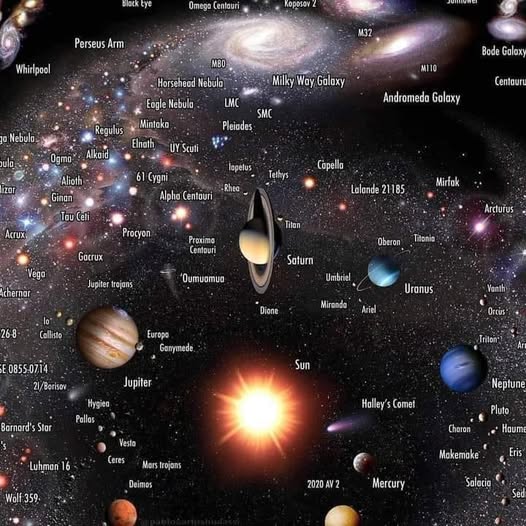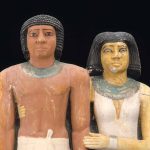A Map of the Cosmos: From Our Solar System to the Stars Beyond

This remarkable cosmic map offers a breathtaking perspective of our place in the universe, beginning with the familiar boundaries of our solar system and stretching outward into the Milky Way galaxy and beyond.
At the very center lies the Sun, the fiery star that anchors our planetary system and sustains life on Earth. Encircling it are the planets, each unique in character and history. Closest to the Sun are Mercury and Venus, small rocky worlds baked by intense heat. Further out is Earth, our blue home, followed by Mars, the red planet that continues to intrigue scientists with its traces of ancient rivers and potential for past life.
Beyond Mars lies the realm of the gas giants. Jupiter, the largest planet, dominates with its swirling storms and a family of moons that include Ganymede and Europa, both worlds of enormous scientific interest. Saturn follows, renowned for its spectacular rings that encircle the planet like cosmic jewelry. Beyond Saturn are the ice giants Uranus and Neptune, mysterious worlds of frozen gases and deep blue hues. At the distant edge, once counted as the ninth planet, Pluto now holds the designation of dwarf planet, reminding us that even the smallest worlds carry stories worth exploring.
The map then extends outward, showing objects that lie beyond the solar system. Proxima Centauri, the closest star to our own, is marked as a near neighbor in cosmic terms, though still more than four light-years away. The Andromeda Galaxy, our closest spiral galaxy, looms far off in the distance, a reminder of the grand scale of the universe and the eventual collision course it shares with the Milky Way. The Pleiades, a cluster of hot young stars, sparkle together in the fabric of the night sky.
The map also highlights travelers that have visited or passed through our neighborhood. Halley’s Comet, which returns every 76 years, has been observed by countless generations throughout human history. More recently, the mysterious interstellar object ‘Oumuamua was detected — the first known visitor from another star system, rushing through our solar system on a trajectory that will never bring it back.
Together, these features illustrate not only the structure of our solar system but also the immensity of the universe that stretches far beyond. The map is a reminder of how small and fragile our world is, and yet how deeply connected it is to the cosmos. To study these patterns is to glimpse the grandeur of creation and the unending mysteries that lie in the stars.











